Simple and Beautiful Rangoli Designs for celebrating the Hindu festival of lights, Diwali, with your family

Rangoli is a traditional decorative folk art of India. And the importance of these designs are different in different states of the country. In fact, Rangoli designs are made in different states of India during different occasions & festivals. These are decorative designs made on floors of living rooms and courtyards during Hindu festivals and are meant as sacred welcoming areas for the Hindu deities. The ancient symbols have been passed on through the ages, from each generation to the one that followed, thus keeping both the art form and the tradition alive.
In Tamil Nadu these designs are called Kolam, Madanae in Rajasthan, Chowkpurna in Northern India, Alpana in Bengal, Aripana in Bihar etc. The purpose of Rangoli is decoration and it is thought to bring good luck. Apart from all the beliefs, Rangolis are good ways to explore creativity in families.
Not only at homes but people also make Rangolis in their office, shops and business areas. There is no hard and fast rule about designs one should make. Simple, colourful, complex, material etc. One can experiment with whatever is available at home and create something which gives a festive look to the space. In some parts of India, it's made up of things available at home like - wheat flour, rice flour, clours made up of stones available in locality etc. Over the years, colours are being used heavily to make Rangoli designs. Other things like colours pebbles, coloured glass pieces, lentils, rice etc are also used to make Rangolis. This year, I plan to create Rangoli with different kinds of leaves. Let's see how it turns out.
The traditional Rangoli of a new bride in a Doli. In medieval and ancient India and for a long time even in modern India, after marriage, dolis bourne on the shoulders of 4-6 men were used to transport the new bride to her husband's home. This is quiet simple design which uses 4-5 colours and one of them is golden.
Related post - Diwali Preparations at my Home
Related post - Diwali Preparations at my Home
Marigold flowers (गेन्दा) are inseparable from Hindu Prayers and religios decorations. Idols of Deities are often adorned with garlands of marigold flowers and red roses. Marigold flowers are used a lot in worship and other rituals of Deepawali.
This Rangoli design is a clever integration of a peacock in the face of Lord Ganesh. While the peacock is the greatly revered in Hindu Scriptures, Lord Ganesh is the deity who the Hindus rely upon to take care of new enterprises. This Rangoli is looking very beautiful on black surface, so when thinking of a Rangoli designs and colours to be used, it's important to keep in mind the colour & texture of base on which you will be making the Rangoli.
Here is a closer look at the Rangoli Design shared above. Beautiful colors and image! The peacock is also the National Bird of India.
A pattern with the peacock in the center and outlined with marigold and rose petals.This photograph is shot from a weird angle. If you look closely at this design, it's made around an area which doesn't have lot of space and Rangoli is starting from the edge of a wall and hence it's a different design with one side as a flat line and other part is quite elaborate with colours and flower petal designs.
Related post - Diwali celebrations have changed over the years and I am enjoying it more with my family now
Related post - Diwali celebrations have changed over the years and I am enjoying it more with my family now
A Peacock is often referred to as a bird with a hundred eyes owing to the eye-like patterns in its tail feathers. Above photograph shows usage of broken bangles to create patterns inside the peacock wings. This is not a complete Rangoli design but a close up to show you how different elements can be used to create some mind blowing Rangoli designs.
The Kalash (a brass pot) is a symbol of abundance in Hinduism. It is often worshipped during the yagyas along with the deities in Arya Samaj branch of Hinduism. Things like this can also be used to decorate your Rangolis. Clay lamps, Candles, lights can be great additions to your Diwali Rangolis.
Here is another Peacock Rangoli design with full rendering of a peacock on the branch of a flowering plant. Swastik, contrary to common knowledge, is an ancient holy symbol in Hinduism. Unfortunately, it was used by Nazis and after that the real, holy meaning seems to have been lost to the world. But in India, it is still used with a lot of respect in almost all religious ceremonies.
Here is a Diwali Rangoli design with Ganesha as main element of the design. Lord Ganesh with his elephant head and human body. Lord Ganesh is widely worshipped along with Goddess Lakshmi (the Godess of Wealth) during diwali. Lord Ganesh, himself, is considered to be the God of New Beginnings, someone who removes hurdles.
Diyas (earthen lamps) are used during diwali to decorate houses and businesses. They are shallow vessels made of clay or brass and have a cotton wick dipped in mustar oil.
This design is more traditional with Om and a stark white color against a bright red. There are various stencils available for quick creation of Diwali Rangoli. You can chose a good mix of stencils and create a Rangoli of your choice in terms of size & colours.
Here is a another Rangoli with 2 peacocks with their royal blue necks and bright green plumage. Peacocks seemed to rule the designs this year.
A new age Ganesh with his vehicle, a mouse. If you look closely, the mouse is offering him an Apple that looks strikingly similar to the logo of the Software Giant of the same name. While the word Adobe has been written in a calligraphic script at the top. Cheeky! - This photograph was clicked during Rangoli competition at Adobe Systems India office.
A close-up of the Kalash. This one is earthern but has been paited over with a metallic paint. Around it are typical colors of Hinduism, saffron and yellow.
Another colorful and elaborate Rangoli design with Ganesh and Swastik, The shape of a mango is another common shape in Indian arts. You'll find it used in abundance in mehndis (henna tattoos) and rangolis.
Lord Ganesh, in his various forms, has inspired many artists. And as a result, his form has been used extensively in all kinds of arts, starting from Rangoli to paintings to sculpting.
Simple, yet pretty Rangoli design for Diwali celebration !
Festival season is at it's peak in India and hence lot of Indians are trying to find an interesting Rangoli design for special Occassion of Diwali.
Elephant, another symbol of Hinduism. Elephants are closely related to Lord Ganesh.
Above Rangoli Design is made up of colourful crystals. First a design is drawn and then then these crystals of different colours are arranged in different sections of the design.
It's a great opportunity for folks to do research about some creative designs of Diwali Rangoli, innovate new stuff to present their ideas in different way or highlight a particular aspect of the festival.
Above Rangoli Design started with a square shape but final outcome looks much more interesting shape in comparison to the square.
Every time when I see these beautiful designs of Diwali Rangoli, a question hits my mind that why do we actually create these Rangoli's in our houses on Diwali Night. The purpose of Rangoli is decorating house and it is thought to bring good luck. Design depictions may also vary as they reflect traditions, folklore and practices that are unique to each part of the country. This is a common practice to make such designs but known by different names in different regions/states of India.
Above Rangoli design is built on geometrical shapes. It's quite an interesting idea to make the design process simpler at the same time keep it interesting. You can certainly play a lot more with different kinds of geometrical shapes and come up with some great Rangoli design for coming Diwali.

Rangoli is traditionally designed by women of the house. Generally, this practice is showcased during occasions such as festivals, auspicious observances, marriage celebrations and other similar milestones and gatherings. At various parts, Rangoli is still made with rice flour. I have seen Madhubani designs made with wet rice flour and in fact, for some of the occasions designs are also made on walls.
 Rangoli designs can be simple geometric shapes, some impressions, flower/petal shapes, but they can also be very elaborate designs crafted by numerous people, based on their lifestyle and how they deal with things in their day to day life. A very good example is Rangoli designs at Adobe - Quite influenced by creativity, technology and innovative ways of expression.
Rangoli designs can be simple geometric shapes, some impressions, flower/petal shapes, but they can also be very elaborate designs crafted by numerous people, based on their lifestyle and how they deal with things in their day to day life. A very good example is Rangoli designs at Adobe - Quite influenced by creativity, technology and innovative ways of expression. The base material is usually dry or wet granulated rice or dry flour, to which sindoor (vermilion), haldi (turmeric) and other natural colors can be added. Modern innovations have crossed most of the boundaries and made these Rangoli designs more beautiful. Chemical colors are a modern variation. Other materials include colored sand and even flowers and petals, as in the case of flower rangolis.
Diwali is one of the main festivals in India, especially in northern state of the country. In a particular calendar year, Indians give special importance to Diwali and it's a national holiday as well. For Hindus, Diwali is one of the most important festivals of the year and is celebrated in families by performing traditional activities together in their homes. Most of the folks plan their vacations around Diwali in advance. Everyone wants to celebrate this festival with families although trends are changing among young working people in metros or outside India.
The Rangoli design and colors is the true identity of the festival. Different types of material is used in making Rangolis there days. It is a way to welcome the lord and flowers have become of the main ingredients to design Diwali Rangoli. Apart from religious belief, it has become a fashionable thing to make best possible Rangoli to impress friends and godess Luxmi, of course.

The Rangoli colors hold a great importance in the culture of India. Originally folks used to use rice flour to make Rangolis. It was used either in dry form or mixed with natural colors & water. South Indians prefer to draw a Rangoli every morning, which can be easily seen around us. It's firmly believed that Rangoli keeps evil spirits away from the home. It also brings prosperity and peace in the life of households. Diwali brings great cheers to people and make them united in different forms. At the same time, economic situations change due to fast cash-flows and mass participation.

Diwali is the biggest Hindu festival of India and Rangoli enlightens the festival with different colors besides fire crackers. The gleam of Diyas and colors of Rangoli makes the best combination to make festival bright. Nearly every household of India celebrating Diwali decorates the house with a Rangoli, which is usually made in front of the main gate. And Rangoli is known by different names in different states of India.
Different names of Rangoli in various States of India -
Rajasthan: Mandana
Madhya Pradesh: ChowkPurna
Orissa: Ossa
Kolkata: Alpana
Tamil Nadu: Kolam
Andhra Pradesh: Muggu
Maharashtra: Rangvalli
Gujarat: Sathiya
Bihar: Aripana
While compiling this post, I found some inserting links on web which share different designs and I loved the following because, each design is explained very well and it will help you in choosing the design which can work best for you.
Diwali festival comes with an opportunity to explore ways to make surroundings beautiful with lights and bright colors. This is one of the most popular festival in India and especially in northern states like Punjab, Haryana, Himachal, Rajasthan, Delhi etc. Everyone is excited to prepare new dishes at home and bring variety of sweets from market to welcome the guests, usually extended families. This is one of the few festivals when everyone wants to celebrate with family members. Unlike Holi, when folks seek presence of their friends around them.
Excitement of the day starts with plan for making beautiful Diwali Rangoli, getting appropriate stuff from market. It's a great opportunity to design something creative outside the home to welcome Godess Luxmi. It is believed that the Rangoli designs bring peace at home and has important significance in Diwali Pooja. Somehow designing Diwali Rangoli is one of the important event in celebrations.
Diwali can't be complete without diyas - and a diya as beautiful as this one will boost the festivities immensely.
Spend some time by looking at all the designs shared above and you will find some clear/hidden messages in each of these. We hope that one of these designs will inspire you to make a special Rangoli at your home on Diwali Night. Happy Diwali & Have a great time with your families during this Festive Season !!!

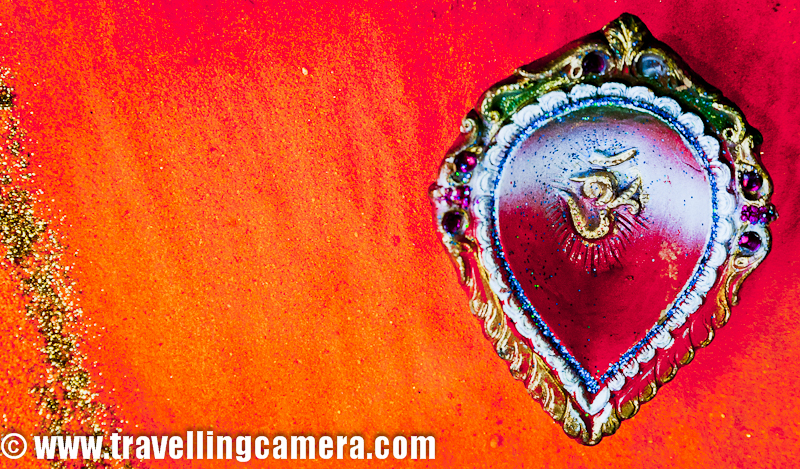
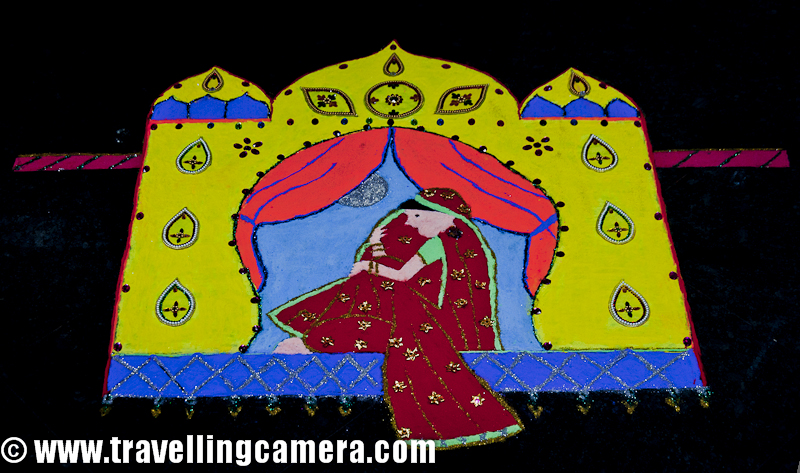



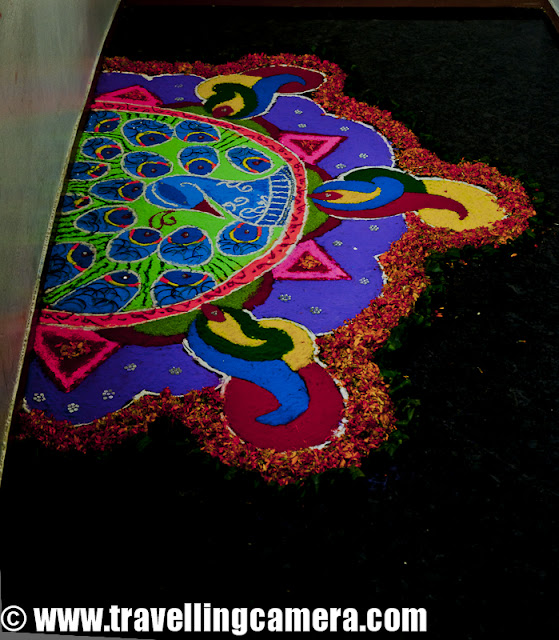




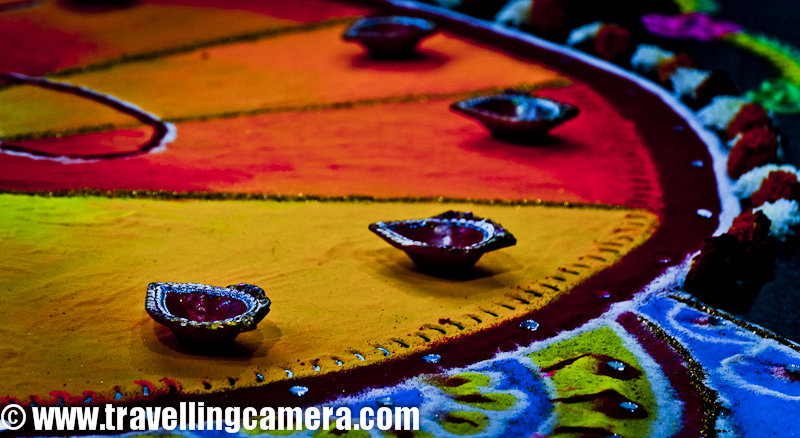










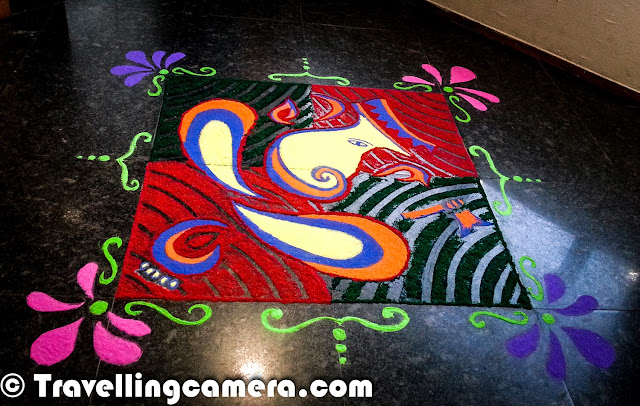
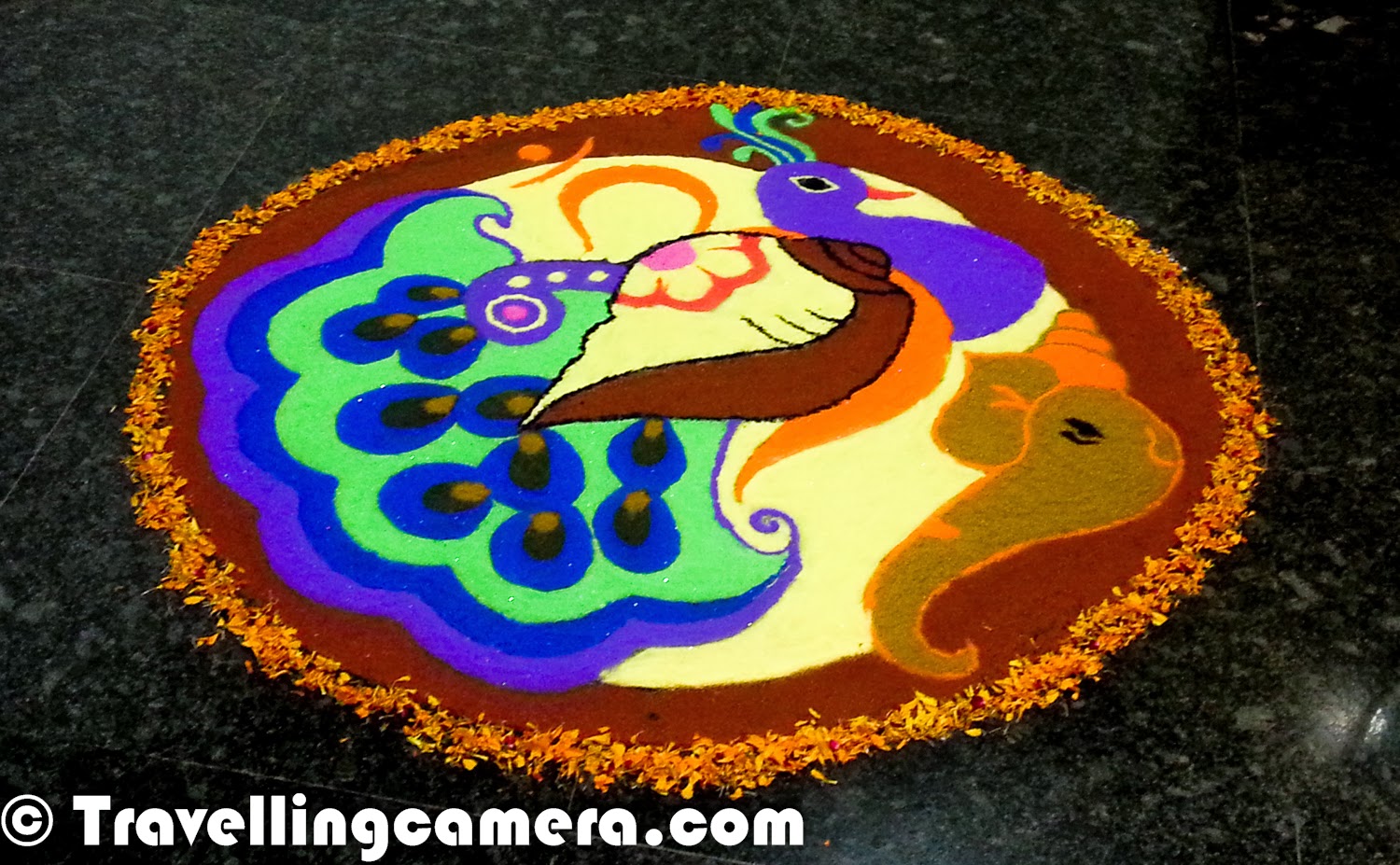
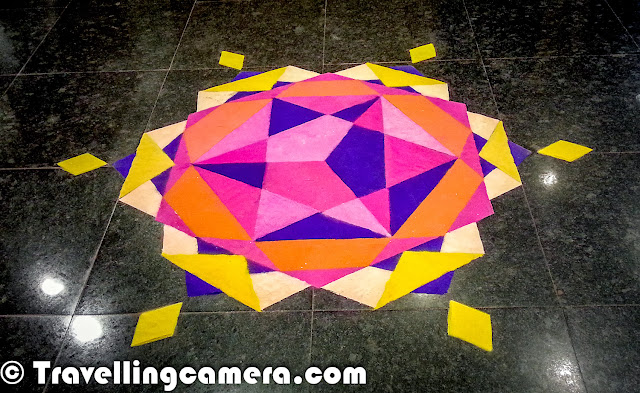






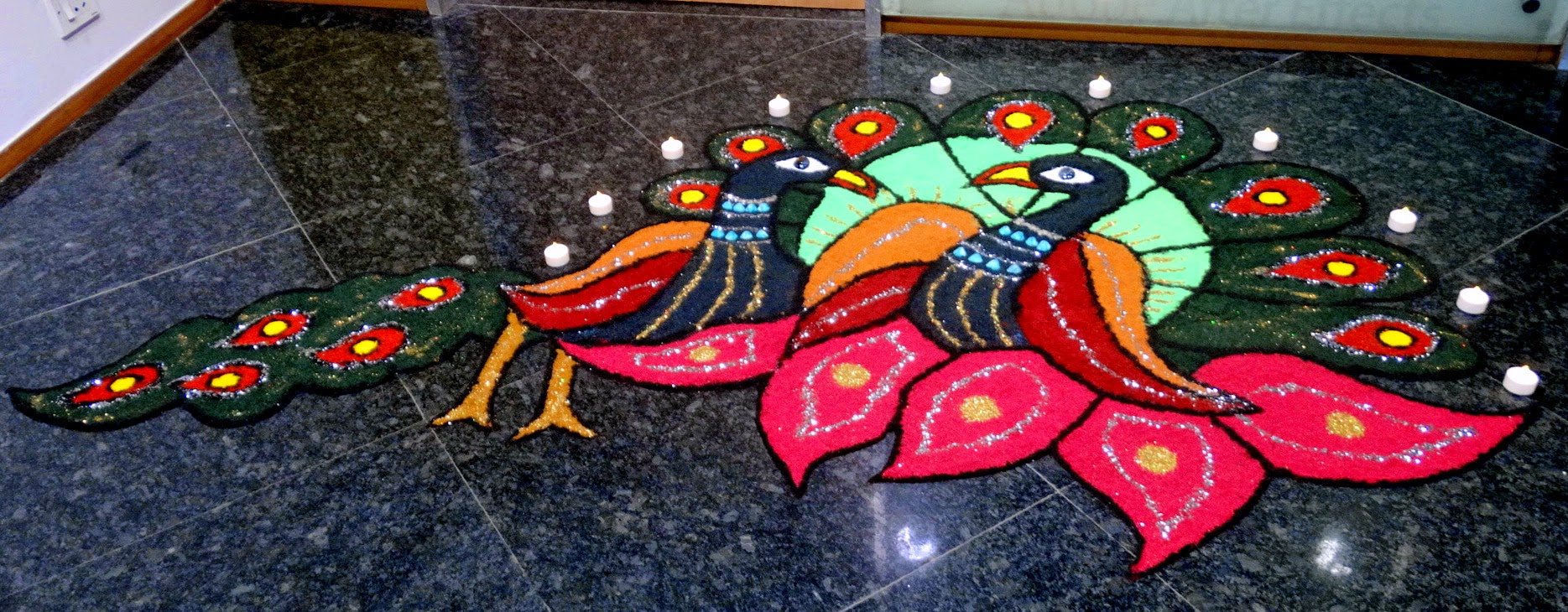
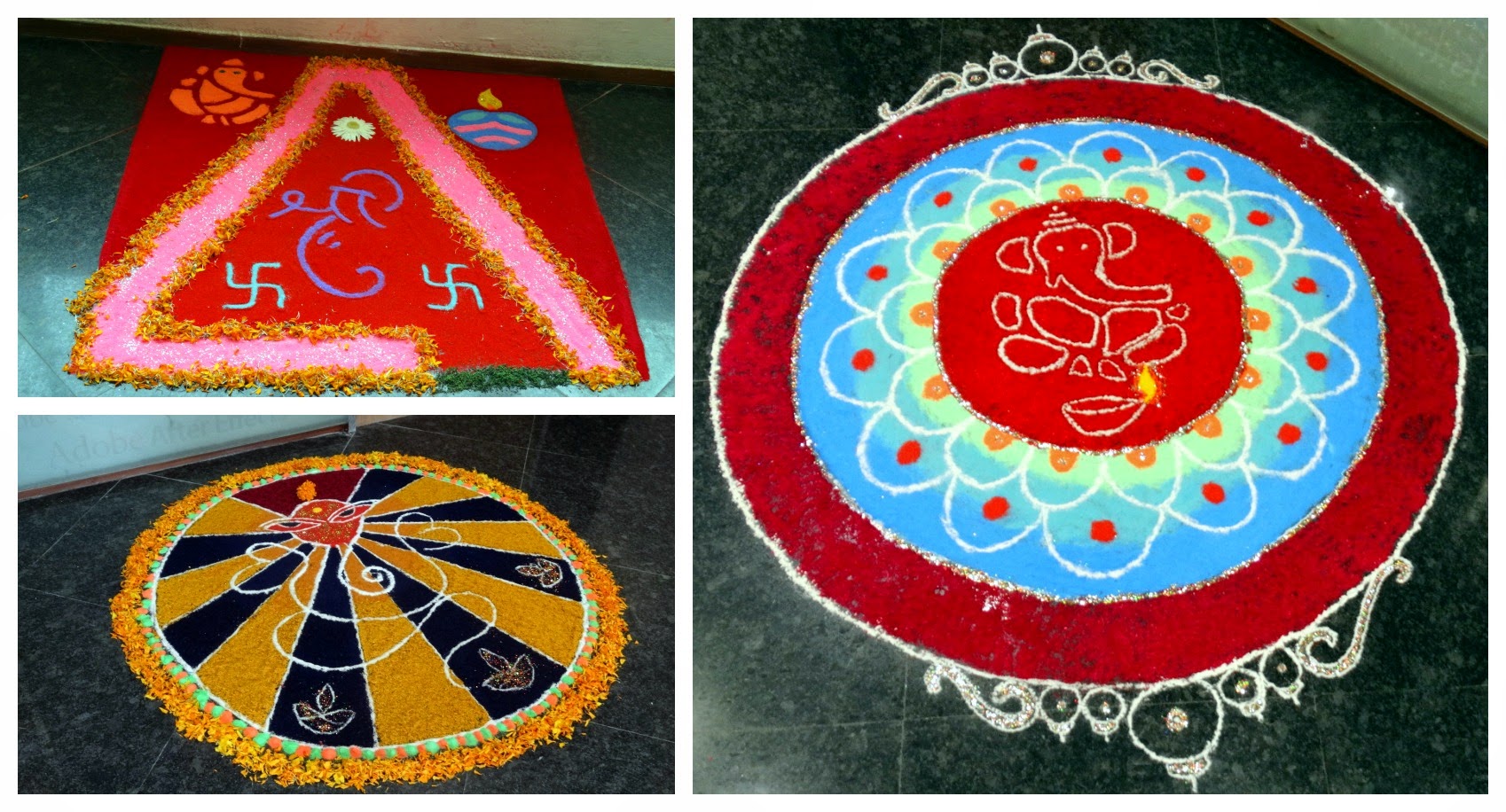

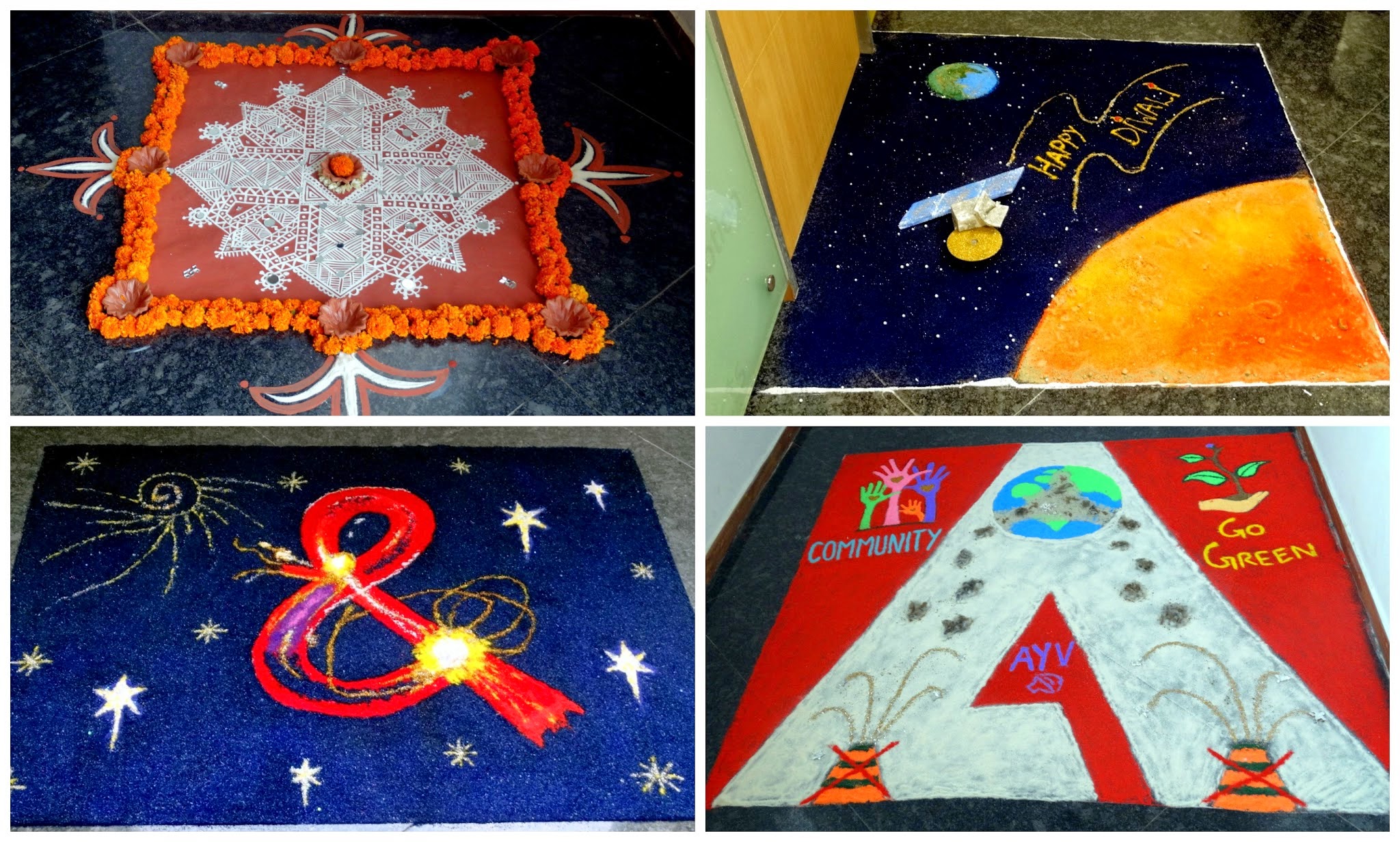
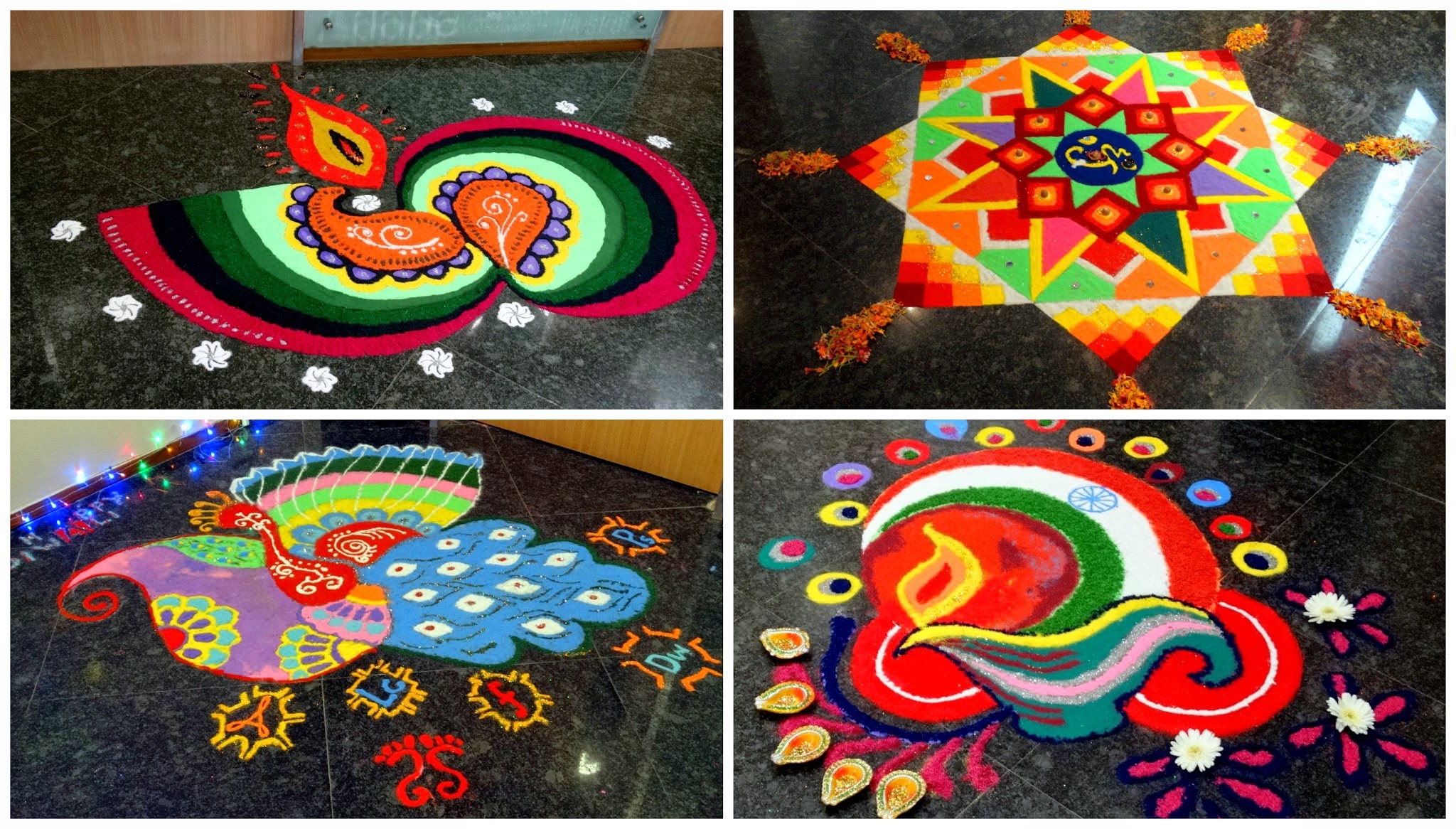
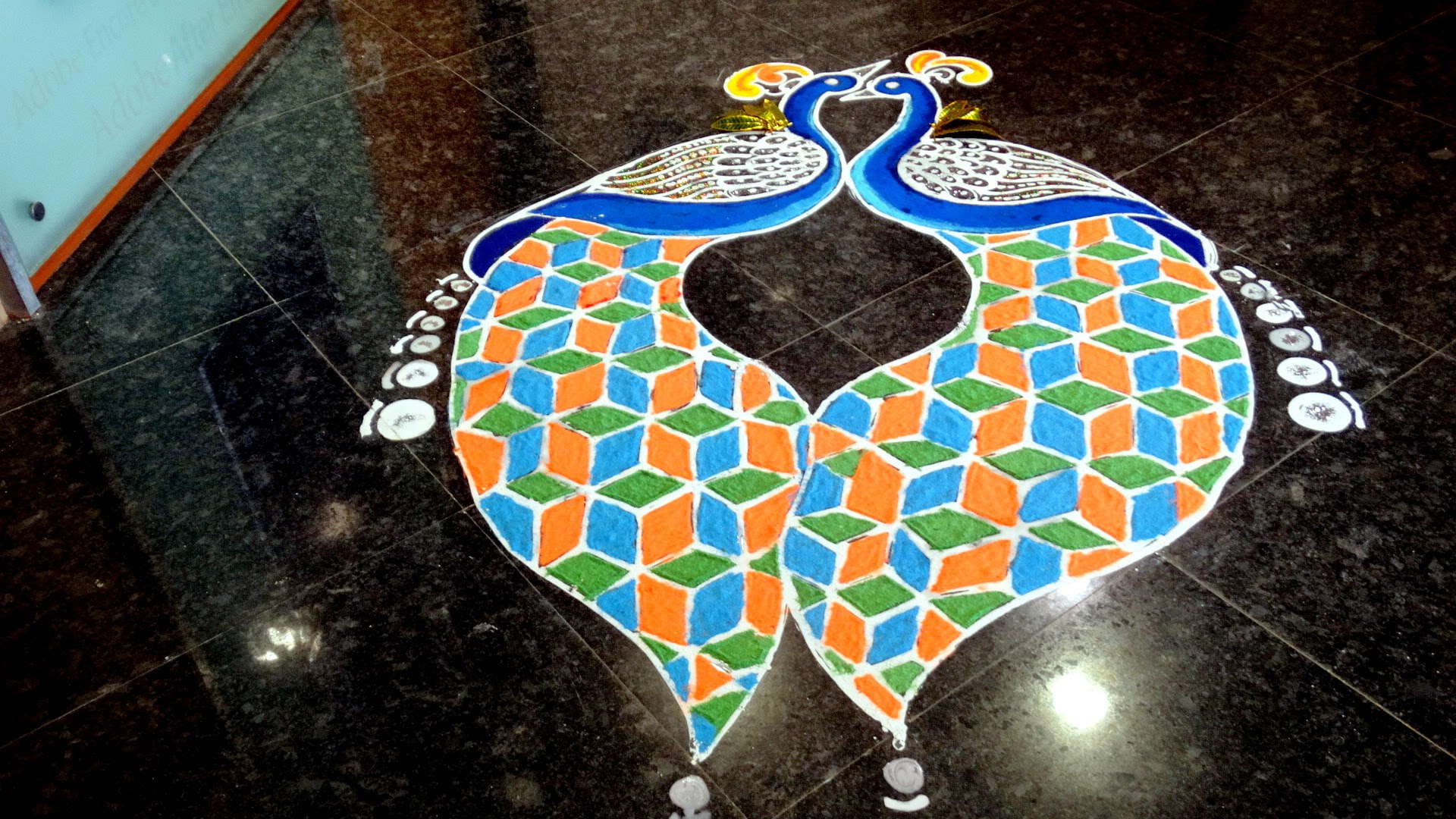
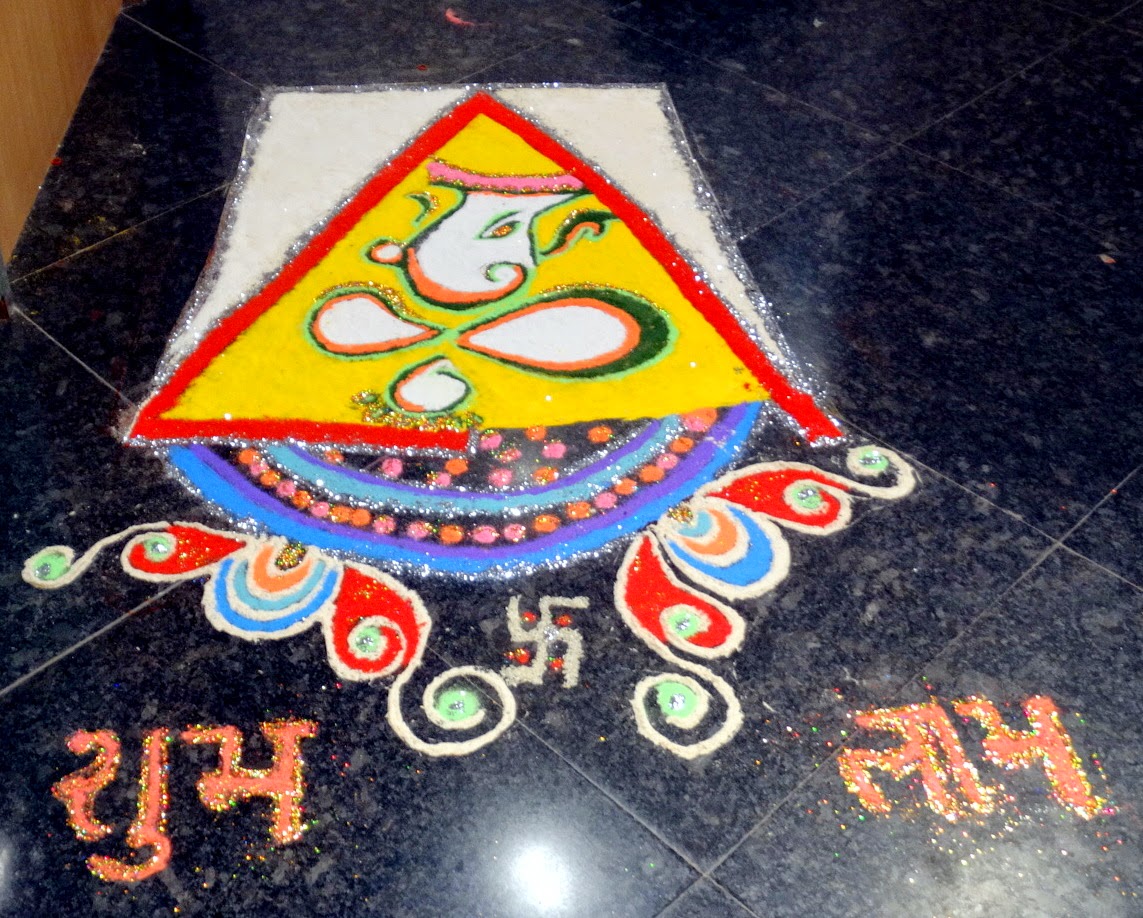
.jpg)
.jpg)
.jpg)
.jpg)
.jpg)
.jpg)
.jpg)
.jpg)
.jpg)
.jpg)

.jpg)
Comments